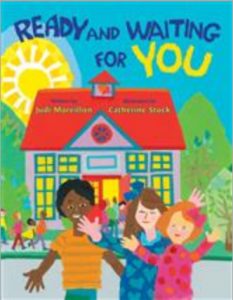Come in, come in. Come in through this door, are you new?
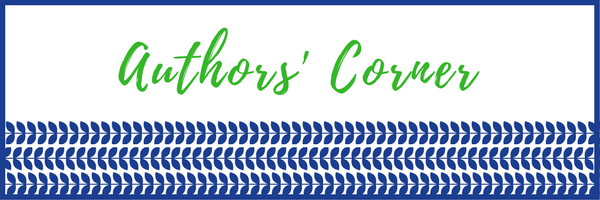

Transgender Characters in Children’s Picture Books
by Janine Schall
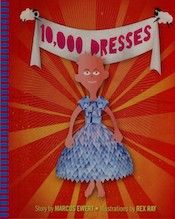 Although I’ve been interested in children’s books with LGBT characters for over a decade, for a long time that actually meant children’s books with gay or lesbian characters. While picture books with characters who transgress gender roles have been around since the 1970s and picture storybooks with explicitly lesbian and gay characters have been around since 1989, a transgender character wasn’t introduced until 2008 in 10,000 Dresses by Marcus Ewert. Continue reading
Although I’ve been interested in children’s books with LGBT characters for over a decade, for a long time that actually meant children’s books with gay or lesbian characters. While picture books with characters who transgress gender roles have been around since the 1970s and picture storybooks with explicitly lesbian and gay characters have been around since 1989, a transgender character wasn’t introduced until 2008 in 10,000 Dresses by Marcus Ewert. Continue reading

The Implied LGBT Character in Children’s Picture Books
by Janine Schall
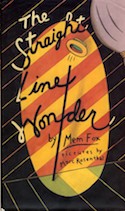 In the first two posts of this series, I briefly discussed the history of picture books with LGBT characters and provided a general overview of the representations of the LGBT characters. This week I look at books where the characters are not explicitly named or depicted as LGBT, but where they are portrayed in ways that imply an LGBT sexual orientation.
In the first two posts of this series, I briefly discussed the history of picture books with LGBT characters and provided a general overview of the representations of the LGBT characters. This week I look at books where the characters are not explicitly named or depicted as LGBT, but where they are portrayed in ways that imply an LGBT sexual orientation.
These books fall into two main groups. The first has characters whose behavior and/or interests are different from the mainstream in ways that can be read as LGBT. Continue reading

Representations of LGBT Characters in Children’s Picture Books
by Janine Schall
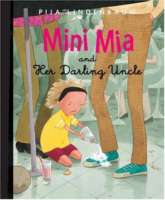 The collection of children’s picture books with LGBT characters began growing steadily when Heather Has Two Mommies (Newman, 1989) was published 25 years ago. With a few books added most years, there are currently over 100 books in this collection, which fall into five general categories: books with lesbian characters, books with gay characters, books with transgender characters, books with implied LGBT characters, and nonfiction books about families which include a gay or lesbian parent. In this categorization system, I have separated the books with lesbian, gay, and transgender characters Continue reading
The collection of children’s picture books with LGBT characters began growing steadily when Heather Has Two Mommies (Newman, 1989) was published 25 years ago. With a few books added most years, there are currently over 100 books in this collection, which fall into five general categories: books with lesbian characters, books with gay characters, books with transgender characters, books with implied LGBT characters, and nonfiction books about families which include a gay or lesbian parent. In this categorization system, I have separated the books with lesbian, gay, and transgender characters Continue reading

Picture Books with LGBT Characters
by Janine Schall
 Recent court decisions relating to the legality of same sex marriage and the decision by President Obama to sign an executive order banning discrimination on the basis of sexual orientation by federal contractors are the most recent public manifestations of the long struggle for equal rights and treatment of LGBT people in the United States. These political and judicial decisions both result from and drive cultural changes, which are reflected in popular media, literature, and other cultural artifacts. Continue reading
Recent court decisions relating to the legality of same sex marriage and the decision by President Obama to sign an executive order banning discrimination on the basis of sexual orientation by federal contractors are the most recent public manifestations of the long struggle for equal rights and treatment of LGBT people in the United States. These political and judicial decisions both result from and drive cultural changes, which are reflected in popular media, literature, and other cultural artifacts. Continue reading

Diaspora in Recent Global Books & Identity Formation
by Seemi Aziz
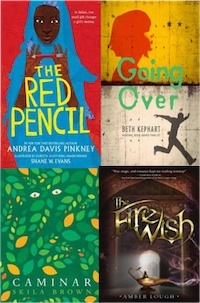 The books to the left portray the identity formation of individual characters as they adjust to new and challenging environments.
The books to the left portray the identity formation of individual characters as they adjust to new and challenging environments.
Going Over by Kephart is a heartfelt novel about a girl and a boy living in the divided Berlin in February 1983. There are barricades and a wall separating east from west. Ada lives among the protesters, and immigrants of Kreuzberg in West Berlin. Stefan lives in East Berlin, in a nondescript apartment bunker of Friedrichshain. The separation between the two sides is merely 165 feet. The characters are bound by love and strong family ties but are separated by their circumstance. The only way out is Continue reading

Diaspora in Recent Global Books: Diamond Boy
by Seemi Aziz
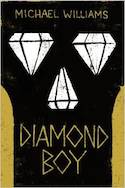 The first book that had an impact on the discussion of diaspora was Diamond Boy by Michael Williams. This story is about Patson Moyo a 15-year-old living with his father, stepmother and sister in Zimbabwe. His father is a schoolteacher who believes in his profession with all his heart but the stepmother wants more financially. The search for ‘more’ takes them to the Marange diamond fields; a portion of which belongs to the stepmother’s brother.Here the family divides as the stepmother opts to stay with her brother’s large family of two wives and children while Patson and his father and sister are driven to live in tobacco sheds while they search for their fortune in a ‘girazi’ (a priceless stone) that would change their lives forever. Continue reading
The first book that had an impact on the discussion of diaspora was Diamond Boy by Michael Williams. This story is about Patson Moyo a 15-year-old living with his father, stepmother and sister in Zimbabwe. His father is a schoolteacher who believes in his profession with all his heart but the stepmother wants more financially. The search for ‘more’ takes them to the Marange diamond fields; a portion of which belongs to the stepmother’s brother.Here the family divides as the stepmother opts to stay with her brother’s large family of two wives and children while Patson and his father and sister are driven to live in tobacco sheds while they search for their fortune in a ‘girazi’ (a priceless stone) that would change their lives forever. Continue reading

Diaspora in Recent Global Books
by Seemi Aziz
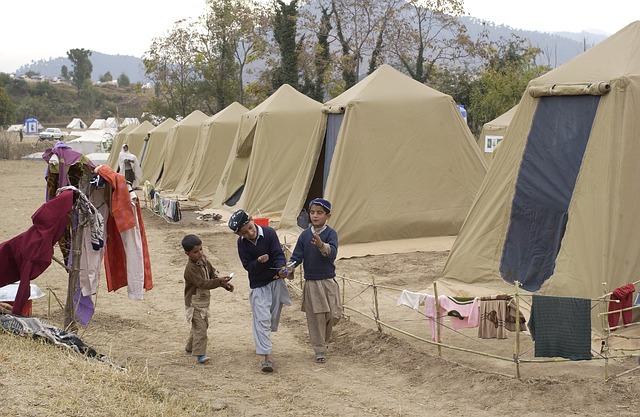 The month of July continues the issues, topics, and concerns that deal with diaspora and its impact in today’s global society. As the discussion about diaspora continues in this forum I needed to add a few thoughts and books that deal with the topic that I have recently come across. Continue reading
The month of July continues the issues, topics, and concerns that deal with diaspora and its impact in today’s global society. As the discussion about diaspora continues in this forum I needed to add a few thoughts and books that deal with the topic that I have recently come across. Continue reading

What It’s Like to be on the Caldecott Committee
Kathy G. Short
 The last column for this month focuses on the process of selecting an award-winning book, rather than on resources for global literature. Because the deliberations of the Caldecott committee occur behind closed doors, I have always wondered what really goes on behind those doors and so was thrilled to experience that process as a member of the 2014 Caldecott committee. The more secretive something is, the more we all want to know what really happens. Continue reading
The last column for this month focuses on the process of selecting an award-winning book, rather than on resources for global literature. Because the deliberations of the Caldecott committee occur behind closed doors, I have always wondered what really goes on behind those doors and so was thrilled to experience that process as a member of the 2014 Caldecott committee. The more secretive something is, the more we all want to know what really happens. Continue reading

Award-Winning Global Literature in the U.S.
by Kathy G. Short
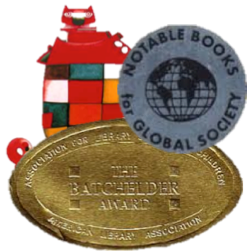 Global literature for children and adolescents has become increasingly available in the United States but is still a relatively small proportion of the number of books published each year. Recent statistics for 2013 from the Cooperative Children’s Book Center show the continuing decrease in the number of books depicting people of color from either the U.S. or the world, down to 7.3% of the total books received in 2013. The number of translated books published in the U.S. continues to be a very small percentage, 2-3%, of the total books for children published each year. Continue reading
Global literature for children and adolescents has become increasingly available in the United States but is still a relatively small proportion of the number of books published each year. Recent statistics for 2013 from the Cooperative Children’s Book Center show the continuing decrease in the number of books depicting people of color from either the U.S. or the world, down to 7.3% of the total books received in 2013. The number of translated books published in the U.S. continues to be a very small percentage, 2-3%, of the total books for children published each year. Continue reading

